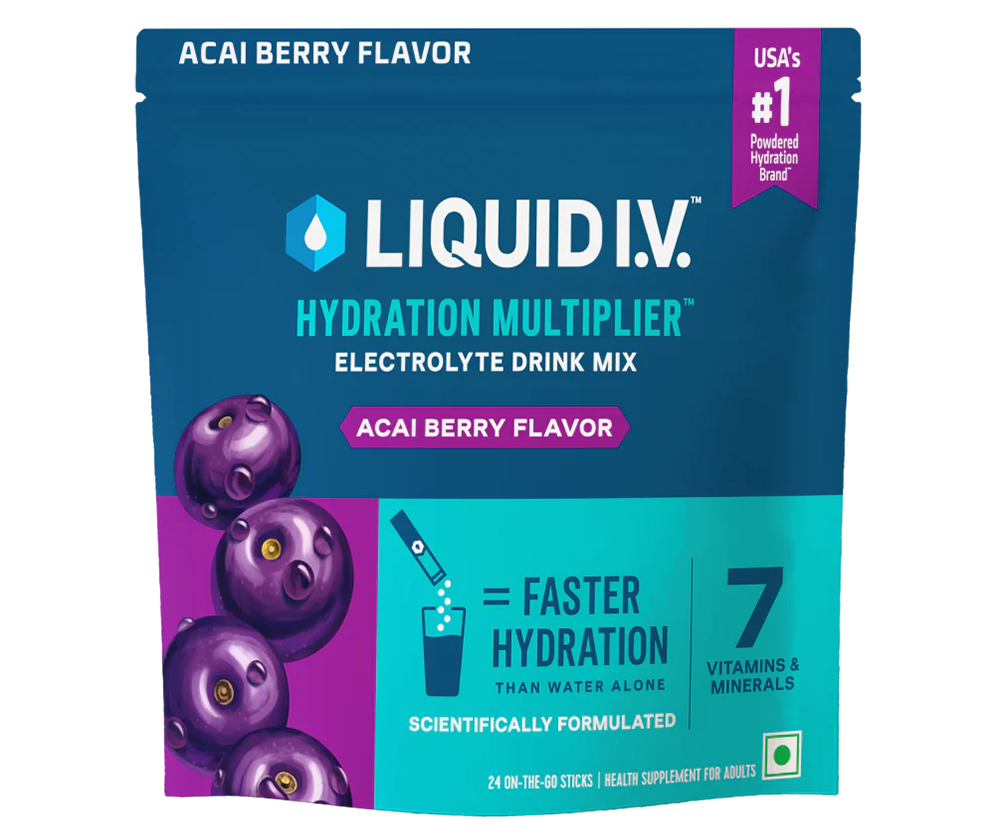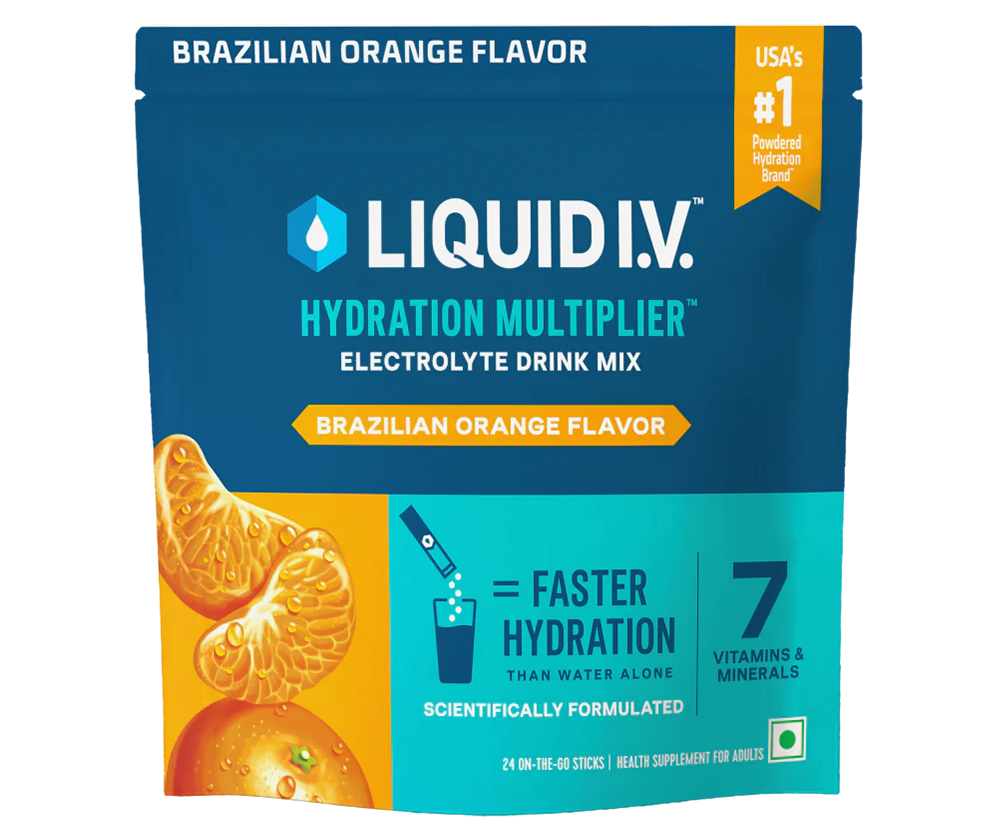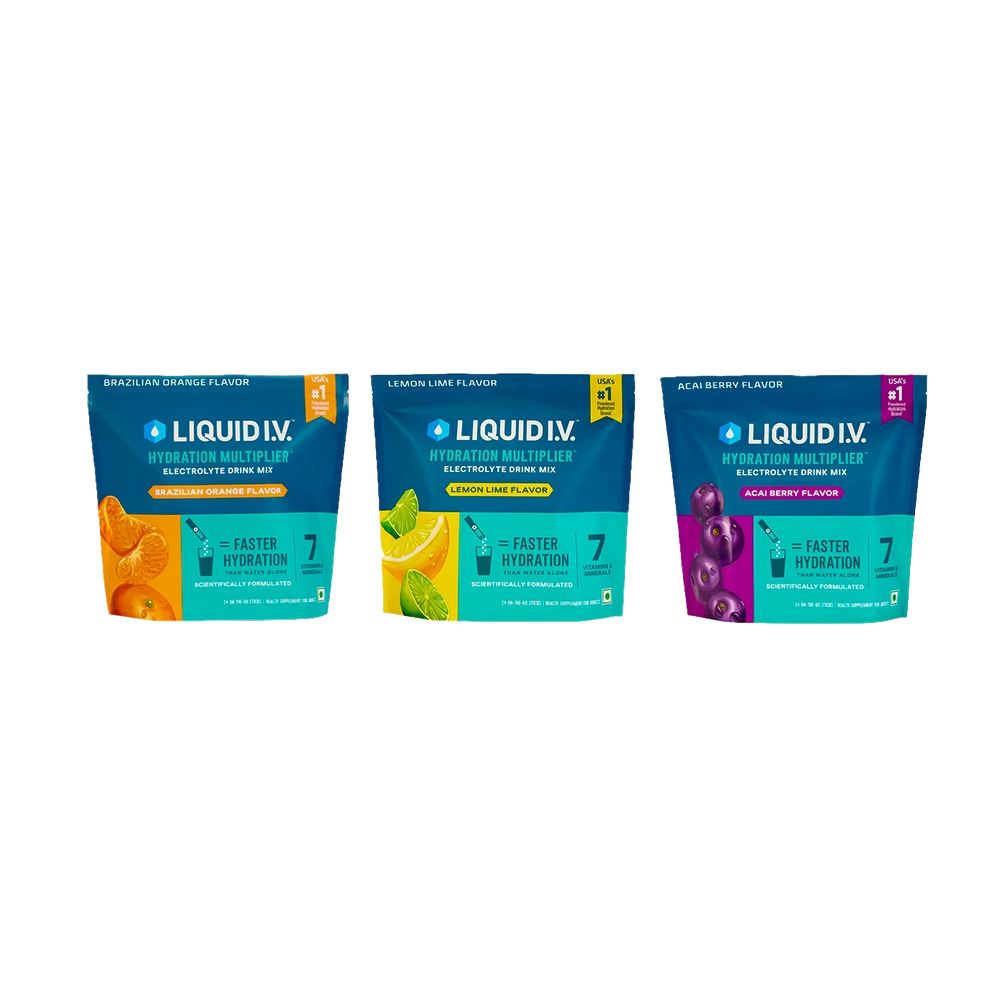Monsoons and hydration
Monsoon vibes are unmatched- cool breezes, cozy rains, and a break from the scorching summer. But don’t let the chill fool you- hydration struggles hit harder during this season. High humidity messes with your sweat game, making fluid loss sneakier and thirst cues unreliable. That’s why plain water isn’t enough. This blog is your cheat sheet on why electrolytes matter in monsoon, how humidity drains your body, and the best ways to stay hydrated through every downpour.
The Hidden Heat and Humidity of Monsoons
Monsoon season might seem like a break from the scorching summer, but don't be fooled. There is still a ton of "hidden heat" and crazy humidity. Even when the sun's playing hide-and-seek behind the clouds, it's still sending out heat, and the warm, moist air traps it close to the ground. (1) This makes the air feel heavy and gross.
Humidity is all about the amount of water vapor in the air. During monsoons, it can shoot up to 90% or more. This high moisture messes with how our bodies cool down. Normally, we sweat to cool off, but when the air is already packed with water vapor, sweat can't evaporate easily. This messes with our body's natural cooling system, making us feel warm and sticky all the time, even if it's not super-hot outside. This constant warmth and the struggle to cool down push our internal core temperature up, making optimal hydration super important. (2) Our bodies are working overtime in monsoon, using up more fluids and essential minerals in the process.
How Does Humidity Impact Sweating and Dehydration
Hey, did you ever feel that feeling – that you a just got out of shower, and in a moment you are all sweaty again! Well let us understand why that happens!
High humidity during monsoon season messes with our body's cooling system. Normally, when we sweat, the moisture evaporates from our skin, taking away heat and cooling us down. But in a humid environment, the air is already packed with water vapor, so there's no room for our sweat to evaporate. Imagine a sponge that's already soaked; it can't absorb more. Similarly, in high humidity, the air is like a saturated sponge, and our sweat has nowhere to go. This makes sweat bead up on our skin, making us feel sticky and uncomfortable without cooling us down. Our body, sensing it's not cooling efficiently, keeps working harder to try to lower its core temperature. This leads to fluid loss, as the sweat just drips off or stays on the skin instead of evaporating. (2).
This constant, ineffective sweating is a major cause of electrolyte loss too. Even though we might not feel as thirsty as we would in dry heat, our bodies are still losing a lot of water and essential minerals like sodium and potassium through sweat. Without proper replenishment, this can quickly lead to an electrolyte imbalance, by setting in signs of dehydration.
Can You Feel Dehydrated When It Is Humid?
Absolutely! Monsoon dehydration is a stealth attack. Unlike dry heat, where you feel thirsty quickly because sweat evaporates fast, high humidity tricks your body into thinking it's not thirsty. Sweat doesn't evaporate easily in humid air, so you keep losing fluids and electrolytes without realizing it. You might not feel thirsty, but you could be getting dehydrated. Look out for signs like constant tiredness, headaches, dizziness, muscle cramps, less peeing, or just feeling sluggish. (3,4) These symptoms can be mistaken for just feeling uncomfortable in the humid weather. So, it's super important to stay on top of your hydration game, even if you don't feel thirsty during the monsoons.
When it comes to exercising during the monsoon season, things get even trickier. Working out in high humidity means your body is working extra hard to cool down. Normally, when you exercise, your body sweats to regulate temperature. But in humid conditions, sweat doesn't evaporate easily, so your body keeps producing more sweat to try to cool off. (2) This leads to a higher risk of dehydration and electrolyte imbalance. Without proper hydration and electrolyte replenishment, you could experience muscle cramps, dizziness, and fatigue, which can seriously mess with your workout.(4)
To stay hydrated and keep your electrolyte levels in check, it's important to drink water regularly and consider electrolyte-rich drinks or supplements, especially if you're exercising. Pay attention to your body's signals and don't wait until you're thirsty to hydrate. (4,5) Staying on top of your hydration game will help you feel better and perform better during your workouts, even in the sticky, humid monsoon weather.
How Electrolytes Work
Electrolytes are like the VIPs. When they dissolve in water, they carry an electric charge and do all sorts of important stuff in your body. They keep your body fluid balanced, send nerve signals, help muscles contract, and keep your pH levels in check. (4)
When you sweat, you don't just lose water; you lose these VIP electrolytes too. Sodium and potassium are especially crucial for keeping fluid balance inside and outside your cells. Sodium helps regulate the amount of water in your body and is key for nerve and muscle function. Potassium is vital for heart health, muscle contractions, and nerve signals. (4)
When you get dehydrated and lose these electrolytes, your body's balance gets messed up. This can lead to a bunch of problems, from muscle cramps and fatigue to more serious issues like heat exhaustion in extreme cases. Replenishing these lost electrolytes along with water is crucial for restoring your body's equilibrium and making sure everything works smoothly. (5) That's why plain water alone often isn't enough for rehydration during times of significant fluid and electrolyte loss, like during the humid monsoon season.
Tips for Staying Hydrated in Monsoons
Staying hydrated during monsoon season isn’t just about chugging water when you feel thirsty. The humidity messes with your body's thirst signals, so you got to be smart about it. Here’s how to keep your hydration game strong:
- Thirst isn’t the boss: Just because you don’t feel thirsty doesn’t mean your body doesn’t need water. Set phone reminders, keep a bottle with you- must make drinking fluids a habit.
- Water is good, but electrolytes are the MVPs: Sweating drains more than just water. It takes away key electrolytes too. Coconut water is an easy fix, since it’s packed with minerals. (6) Fresh fruit juices (but go easy on the sugar), buttermilk, and veggie broths also do the trick. (7)
- Electrolyte drinks for the win: If you’ve been sweating buckets or feeling dehydrated, electrolyte drinks are clutch. (7) Drinks like Liquid I.V. are scientifically designed to rehydrate you quickly with an optimal balance of fluids, electrolytes and glucose to give you optimal hydration. (8)
- Eat your water: Some foods are basically water in disguise. Watermelon, cucumber, oranges, spinach, tomatoes- they hydrate you. Toss them in salads, smoothies, or just munch away.
- Caffeine and alcohol? Proceed with caution: Both are sneaky dehydrators because they make you pee more. Consume in moderation and hydrate.
- Urine check = hydration check: Your pee is low-key telling you if you're hydrated. Pale yellow? You’re good. Dark yellow or amber? Time to drink up. (5)
- Wear smart, not sweaty: Light, loose, breathable clothes help your body cool down. No one needs extra heat when the air is already sticky.
Mix these up, stay ahead of dehydration, and let the monsoon do its thing while you keep your body running at peak efficiency. Remember Good Hydration = self-care.
Conclusion
Monsoon season is sneaky. The rain might make things feel cooler, but the humidity? That’s a whole different beast. It messes with your body's cooling system, making you sweat nonstop without cooling you down. The worst part? You’re losing electrolytes, and thirst signals aren’t reliable. That’s how dehydration creeps in - cue fatigue, headaches, and muscle soreness.
Here’s the deal: electrolytes are important. They keep your fluid balance in check, help your nerves fire, and make sure your muscles don’t just give up on you. Water alone isn’t enough- you need the full squad of electrolytes. So be intentional about hydrating the right way: sip electrolyte-rich drinks, eat water-packed foods, and don’t wait until you feel parched to drink up. Get these habits on lock, and you’ll not only avoid dehydration but actually thrive while soaking in the monsoon vibes.
FAQs
-
Why do we feel more dehydrated in monsoons?
Monsoon humidity throws off your body's cooling system by stopping sweat from evaporating properly. You keep sweating, but it doesn’t actually cool you down, leading to sneaky fluid and electrolyte loss without feeling thirsty. Since your body is working overtime to regulate its temperature, it burns through fluids fast. Staying ahead of dehydration with water and electrolytes is a must if you want to feel good instead of exhausted. -
How much water should I drink in monsoon?
There isn't a one-size-fits-all answer, as individual needs vary based on activity level, body size, and health conditions. However, generally, aiming for at least 8 glasses (2-2.5 litres) of fluids daily is a good starting point. (9) Crucially, in monsoons, this should include not just plain water but also coconut water, buttermilk, or diluted fruit juices and electrolyte rich drinks to compensate for electrolyte losses through sweat. Listen to your body and adjust your intake if you are physically active or spending more time outdoors. -
Why should I have electrolytes when it's humid?
You should have electrolytes when it's humid because humidity significantly impairs your body's ability to cool itself through sweat evaporation. This leads to prolonged and often unnoticeable sweating. While you might not feel as thirsty, your body is still losing essential minerals along with water. Replenishing these electrolytes is crucial to maintain fluid balance, support nerve and muscle function, prevent muscle cramps, and avoid the symptoms of dehydration and heat exhaustion. Plain water alone cannot replace these lost minerals, making electrolyte intake vital for effective rehydration in humid conditions.





